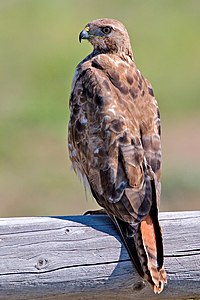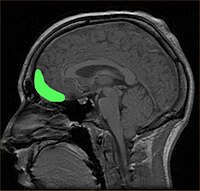
Integrating multiple sign types to improve occupancy estimation for inconspicuous species
Sign Up to like & getrecommendations! Published in 2023 at "Ecology and Evolution"
DOI: 10.1002/ece3.10019
Abstract: Abstract Standard occupancy models enable unbiased estimation of occupancy by accounting for observation errors such as missed detections (false negatives) and, less commonly, incorrect detections (false positives). Occupancy models are fitted to data from repeated… read more here.
Keywords: occupancy; inconspicuous species; multi sign; detection ... See more keywords

False Positive Hoover's Sign in Apraxia
Sign Up to like & getrecommendations! Published in 2020 at "Movement Disorders Clinical Practice"
DOI: 10.1002/mdc3.12970
Abstract: Hoover’s sign and hip abductor sign are positive diagnostic features of functional leg weakness in patients with functional neurological disorders (FND). Hoover’s sign describes weakness of voluntary hip extension, which returns to normal with contralateral… read more here.
Keywords: movement; hip; hoover sign; sign ... See more keywords

Steam Train Sign in Slow Orthostatic Tremor
Sign Up to like & getrecommendations! Published in 2022 at "Movement Disorders Clinical Practice"
DOI: 10.1002/mdc3.13422
Abstract: The helicopter sign is a pathognomonic sign of orthostatic tremor constituting the auditory correlate of the characteristic high frequency (13 to 18 Hz) tremor in the legs upon standing. 1 The auditory correlate of low… read more here.
Keywords: tremor; steam train; etiology; slow orthostatic ... See more keywords

The Hot Cross Bun Sign: A Journey Across Etiologies
Sign Up to like & getrecommendations! Published in 2022 at "Movement Disorders Clinical Practice"
DOI: 10.1002/mdc3.13596
Abstract: When the hot cross bun (HCB) was created in the 12th century, little did its makers know that the buns’ rather innocuous existence would extend far beyond the realms of the culinary world and that… read more here.
Keywords: hcbs; hot cross; etiology; cross bun ... See more keywords

SIGN on the pharmacological management of migraine
Sign Up to like & getrecommendations! Published in 2018 at "Prescriber"
DOI: 10.1002/psb.1697
Abstract: In February 2018, the Scottish Intercollegiate Guidelines Network (SIGN) published a new guideline on the pharmacological management of migraine (SIGN 155). This article discusses the main recommendations of the guidance and how it compares with… read more here.
Keywords: migraine sign; pharmacological management; management migraine; sign ... See more keywords

A simple approach towards the sign problem using path optimisation
Sign Up to like & getrecommendations! Published in 2018 at "Journal of High Energy Physics"
DOI: 10.1007/jhep12(2018)054
Abstract: A bstractWe suggest an approach for simulating theories with a sign problem that relies on optimisation of complex integration contours that are not restricted to lie along Lefschetz thimbles. To that end we consider the… read more here.
Keywords: sign; optimisation; simple approach; sign problem ... See more keywords

Quantitative Assessment of Hyperdense Sign Measured by Hounsfield Units is Associated with Unsuccessful Mechanical Thrombectomy
Sign Up to like & getrecommendations! Published in 2020 at "Clinical Neuroradiology"
DOI: 10.1007/s00062-020-00985-0
Abstract: Despite advancement in mechanical thrombectomy (MT) techniques, 10–30% of MT for large vessel occlusions (LVO) are unsuccessful. Current prediction models fail to address the association between patient-specific factors and reperfusion. We aimed to evaluate objective,… read more here.
Keywords: associated unsuccessful; mechanical thrombectomy; hounsfield units; quantitative assessment ... See more keywords

Sign tracking predicts suboptimal behavior in a rodent gambling task.
Sign Up to like & getrecommendations! Published in 2021 at "Psychopharmacology"
DOI: 10.1007/s00213-021-05887-8
Abstract: RATIONALE Reward-associated cues can promote maladaptive behavior, including risky decision-making in a gambling setting. A propensity for sign tracking over goal tracking-i.e., interaction with a reward-predictive cue rather than the site of reward-demonstrates an individual's… read more here.
Keywords: sign tracking; gambling task; sign; rodent gambling ... See more keywords

Bridging vessel sign
Sign Up to like & getrecommendations! Published in 2017 at "Abdominal Radiology"
DOI: 10.1007/s00261-017-1260-y
Abstract: The appearance of multiple vascular channels connecting the uterus to an adjacent pelvic mass, as seen on imaging studies, is known as the ‘‘bridging vessel’’ or ‘‘bridging vascular’’ sign (Fig. 1). This is similar to… read more here.
Keywords: subserosal fibroid; bridging vessel; mass; sign ... See more keywords

Daughter cyst sign in ovarian cysts
Sign Up to like & getrecommendations! Published in 2017 at "Abdominal Radiology"
DOI: 10.1007/s00261-017-1414-y
Abstract: Ovarian lesions account for most of the abdominal masses in female neonates [1]. Imaging plays a key role in its adequate characterization, as it allows the differentiation between cystic and solid lesions as well as… read more here.
Keywords: cyst sign; ovarian cysts; cyst; sign ... See more keywords

Tree-in-bud sign
Sign Up to like & getrecommendations! Published in 2018 at "Abdominal Radiology"
DOI: 10.1007/s00261-018-1562-8
Abstract: The tree-in-bud pattern represents bronchiolar luminal impaction with mucus, pus or fluid, which demarcates the normally invisible branching course of the distal peripheral pathways, thus resembling a tree branch studded with buds on High-Resolution CT… read more here.
Keywords: radiology; tree bud; bud sign; sign ... See more keywords